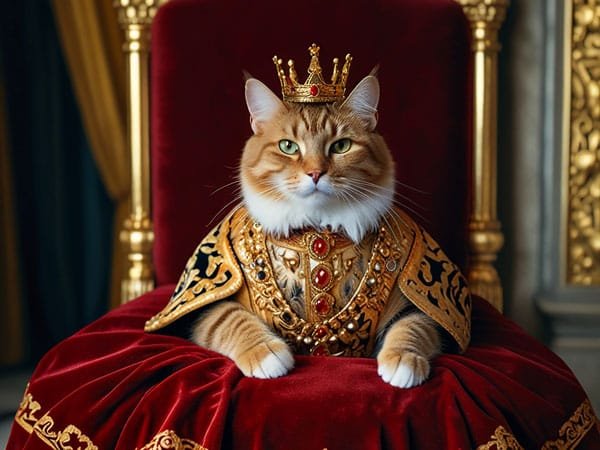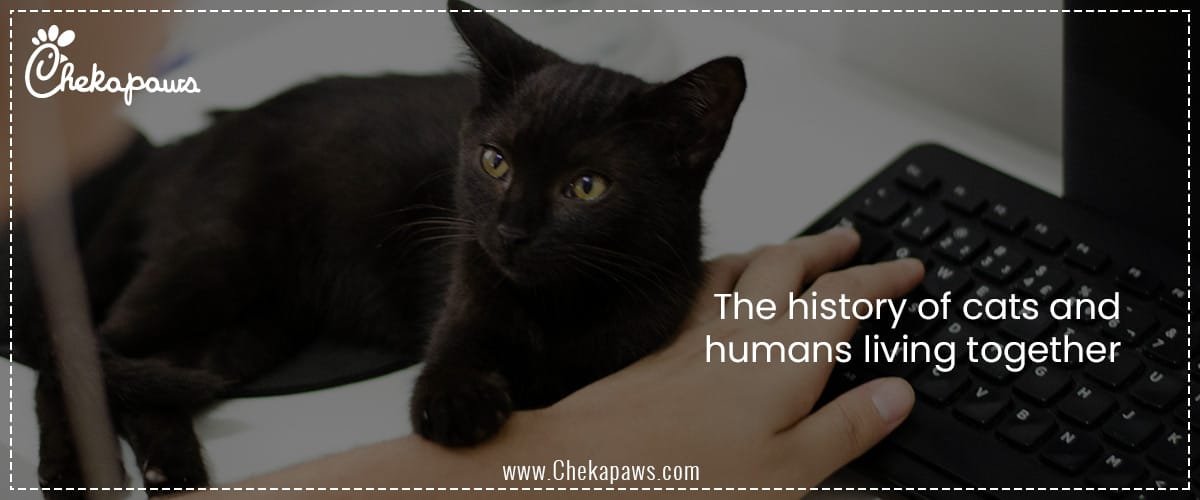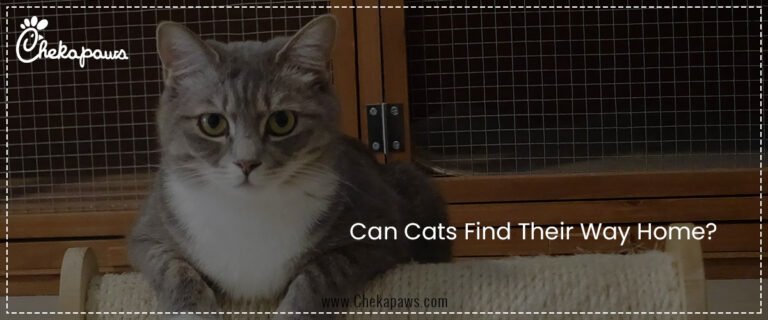Being a pet parent, I am aware of Cats and humans have been coexisting for thousands of years, quietly becoming a part of our everyday existence. In contrast to dogs, which people actively tamed, cats made their decision to join us in a quiet, circumspect manner. From guards of sacred temples to catching mice in grain storage to becoming pampered house pets with social media stardom today, cats have had an interesting history.
The tale of cats and humans is not only one of domestication; it also involves cultural symbolism, reciprocal advantages, and the eternal mystique of these elegant animals. From ancient civilizations to the present, cats have coexisted with humans for a very long time, as this essay will thoroughly examine.
Table of Contents

The Origins of Cat Domestication
Wild Beginnings
It is thought that the African wildcat (Felis lybica) is the ancestor of the domestic cat (Felis catus). Compared to dogs, cats underwent only partial domestication, as shown by genetic tests that reveal that domestic cats are very similar to their wild ancestors.
When people in the Fertile Crescent switched from hunting and gathering to sedentary farming about 10,000 years ago, the process got started. Rodents were drawn to grain stockpiles, while wildcats were drawn to rodents. Near humans, these wildcats discovered a reliable food source, and people soon recognized the advantages of having a natural pest control tool close by.
A Mutual Relationship
Cats mostly domesticated themselves, in contrast with dogs, which were carefully bred for particular uses. Cats tolerated people because of the regular food source. This bond may have been strengthened over time as more food and protection were given to nicer cats by humans.
Cats in Ancient Egypt
Sacred Beings
Ancient Egypt is perhaps the civilization most strongly associated with cats. Cats were considered sacred animals by the Egyptians, who kept them for purposes other than pest control. Often portrayed as a lady with the head of a domestic cat or lioness, cats were connected to Bastet, the goddess of protection, fertility, and the home.
Even unintentionally killing a cat carried the death penalty. Cats were dearly grieved by their families, who showed their sorrow by shaving their brows. Because of their mystical significance, cats were frequently mummified and buried with their owners.
Cats as Protectors
Along with to using cats to keep mice and rats away from grain silos, Egyptian households viewed cats as spiritual protectors against malevolent powers. Because they were thought to ward off evil spirits, cats were permitted to roam freely within temples.
The Spread from Egypt
Cats moved from Egypt to other places via trade routes and marine ties. Egyptian cats gradually spread throughout Europe and Asia by travelling on ships and managing rodent populations.
Cats in the Classical World
Greece and Rome
Originally uncommon and highly valued, cats were frequently given as gifts by the affluent in Greece. Ever pragmatic, the Romans appreciated cats for their ability to help eliminate vermin. Cats were generally restricted to homes, granaries, and ships, in contrast to dogs, who were used for hunting and military purposes.
The increasing number of cats throughout Europe was helped by Roman expansion. They survived in a variety of settings thanks to their adaptability and stealth.
Cats in Early Asia
Cats in China
Approximately 500 BCE, cats made their way to China. They came to symbolise good fortune, wealth, and crop protection in Chinese culture. Cats are praised as cherished companions in Tang Dynasty poetry and paintings.
Cats in Japan
Around the sixth century, cats were imported to Japan, frequently by Buddhist monks who brought them to keep mice away from holy manuscripts. With tales of magical cats like the bakeneko and nekomata, cats eventually took front stage in Japanese folklore. In homes and businesses, the well-known Maneki-neko, or “beckoning cat,” has come to represent good fortune.
Cats in the Middle Ages
Superstition and Persecution
Because of their nocturnal habits and mysterious character, cats were associated with witchcraft and the paranormal in mediaeval Europe. In particular, black cats were thought to be witches’ friends. Widespread persecution resulted from this reputation.
Because of superstition, cats were frequently slaughtered during the 14th-century Black Death. Ironically, as rodent populations increased unchecked, this made the epidemic worse.
Cats in Islamic Culture
In Islamic culture, on the other hand, cats were seen more favourably. According to legend, Prophet Muhammad adored cats, and mosques were permitted to house them. Cats are frequently portrayed with affection in Islamic literature and art, linking them to decency and cleanliness.
Renaissance to Enlightenment
Shifting Perceptions
Cats were once again popular in European homes by the Renaissance. They were present at royal courts as well as in literature and art. The French Cardinal Richelieu, for instance, is renowned for having a large cat collection.
Cats were crucial in keeping rats away from books and manuscripts as printing technology advanced. Cats’ beauty and anatomy captivated artists like Albrecht Dürer and Leonardo da Vinci, who drew sketches of them.
Enlightenment Curiosity
Cats were studied in natural history classes throughout the Age of Enlightenment, which promoted scientific observation. In comparison to dogs, their behaviour, intelligence, and distinct independence were disputed by academics.
Cats in the 18th and 19th Centuries
Industrialization and Urban Life
During the Industrial Revolution, the necessity for pest control increased along with the expansion of cities. Both as domestic pets and as strays, cats have adapted successfully to urban settings.
Cats as Companions
Cats were well-established as pets by the Victorian era. The fact that Queen Victoria owned cats herself contributed to their popularity among the British elite. Lewis Carroll’s Cheshire Cat from Alice’s Adventures in Wonderland is one example of how cats have appeared in literature.
The 19th century saw the emergence of organized cat fancy with the introduction of cat shows that featured various breeds.
Cats in the Modern Era
The 20th Century
Cats became beloved family members instead of being used animals. Keeping cats indoors has never been simpler thanks to developments in commercial cat food, litter boxes, and veterinarian care.
The value of cats on ships and in military camps, where they kept pests under control and gave soldiers company, was further highlighted by World Wars I and II.
Pop Culture Icons
Think of Garfield, Felix the Cat, and Tom from Tom and Jerry as examples of how cats rose to fame in popular culture by the middle of the 20th century. Cats’ independence and mystery captivated authors, painters, and filmmakers.
Cats in the 21st Century
Internet Fame
As the internet gained popularity, cats became the focus of viral culture. Cats, from Maru to Grumpy Cat, rose to fame on the internet thanks to their eccentric personalities.
Modern Attitudes
Cats are now one of the most common pets in the world, frequently outnumbering dogs. They stand for comfort, mystery, and independence. Innovations in the pet sector, such as smart collars and automatic feeds, demonstrate how ingrained cats have grown in contemporary culture.
The Future of Cats and Humans
Cats continue to be adaptable as society changes. They live side by side with us in anything from urban dwellings to rural pastures. The way to which people today care about the welfare of cats is demonstrated by initiatives to improve it, such as cat cafes and spay-neuter programs.
Conclusion
Humans and cats have coexisted peacefully throughout history, compared to being forced into domestication. Cats have made their way into our lives through everything from the hallowed temples of ancient Egypt to viral online stardom. They are even more attractive because, in contrast to dogs, they nevertheless maintain a large degree of their independence.
Their narrative reminds us that some relationships are formed not on dominance or control but on mutual respect and coexistence. Cats still choose to live with humans today, just as they did thousands of years ago.







